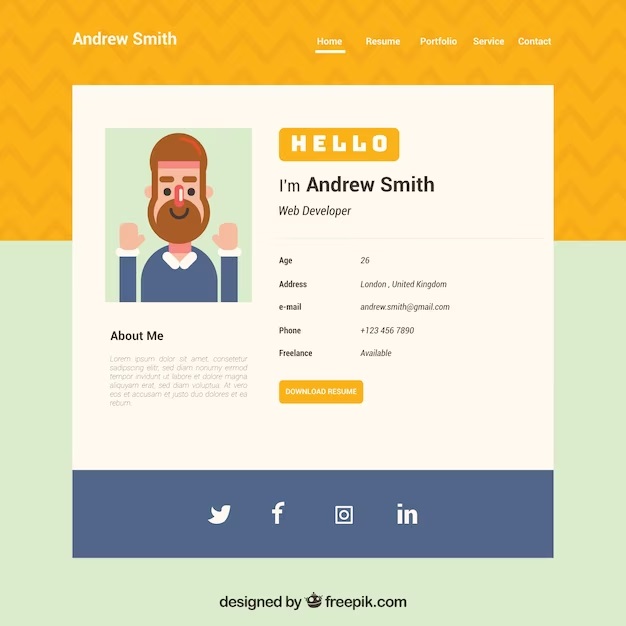The Do's and Don'ts of Profile Pictures: Making a Great First Impression
The Do's and Don'ts of Profile Pictures: Making a Great First Impression
Your profile picture is often the first impression that others will have of you. It can communicate a lot about your personality and lifestyle, so you want to make sure that it presents you in the best possible light. So, what are the do's and don'ts of profile pictures? First, do show your face clearly and with a genuine smile. People want to see who they are connecting with and a smile can make you appear both friendly and approachable. Don't use a photo of a pet or cartoon character as your profile picture, as this can come across as unprofessional and unpersonable.
Another important do for profile pictures is to choose a background that is simple and uncluttered. You want to be the focus of the photo, not your surroundings. A solid-colored wall or nature backdrop can work well. Meanwhile, a don't is to use a filtered or overly edited photo. You want your profile picture to be an accurate representation of yourself and while filters can be fun, they can also distort your appearance.
Finally, your profile picture should be current rather than outdated. If you look significantly different from your profile picture in person, it can create confusion and leave a negative impression. Ideally, you want to update your profile picture every year or two to ensure it accurately represents your current appearance. On the other hand, don't switch out your profile picture too frequently, as this can come across as insecure or attention-seeking. Stick to a well-curated collection of photos that truly represent you.
Tips For Choosing the Right Profile Picture
The profile picture you select for your social media accounts and online ID is the first point of contact with potential colleagues, employers, and connections. It can shape their initial opinion and perception of your personality, competence level, and professionalism. To make sure you choose the right profile picture, keep in mind the message you want to convey, the image you want to project, and the audience you want to attract. Take your time, ask for feedback, and test different options before making a final decision.
Your profile picture should reflect your personal brand, values, and goals. Do you want to appear approachable, trustworthy, confident, or creative? Do you want to represent your industry, role, skills, or hobbies? Do you want to stand out or blend in with your peers? Your choices of clothing, accessories, background, lighting, and pose can all contribute to your profile picture's impact. Consider the context of your social media platform and its users' preferences. For example, if you use LinkedIn for professional networking, you may want to opt for a more formal and polished look than if you use Instagram for personal expression.
Lastly, make sure your profile picture is up-to-date, authentic, and high-quality. Don't use a picture from ten years ago if you don't look the same now. Don't use a celebrity or stock photo if you want to represent yourself. Don't use a blurry or pixelated photo if you want to appear professional. Invest in a good camera, natural lighting, and a clean background if you can. If you can't, choose the best option available and edit it if necessary. Use tools like Adobe Photoshop, Canva, or Snapseed to adjust the brightness, contrast, saturation, and cropping of your image. Don't overdo it, though, as you want to create an impression of your authentic self, not a photoshopped version of it.
Selecting an Appropriate Background
Selecting an appropriate background is crucial when designing print or digital materials. Depending on the purpose of the design, the background can evoke various emotions in the viewer. For example, a plain white background creates a clean and modern look, while a textured background can add warmth and depth. It is important to consider the target audience and the message the design aims to convey when selecting a background. A busy or distracting background can detract from the intended message, while a simple or monotone background can make the design appear dull.
Color selection is also an important factor when choosing a background. Contrasting colors can create a striking and memorable design, while complementary colors can create a cohesive and harmonious feel. The color choice can also evoke certain emotions, such as blue for calmness, red for passion, and green for growth. Additionally, the brightness and saturation of the background color can affect the visibility and readability of the design. It is important to experiment with different color combinations and shades to find the perfect balance for the intended design.
Texture and pattern can also add interest and depth to a background. A subtle pattern can create a sense of movement or flow, while a bold texture can emphasize certain elements of the design. However, too much texture or pattern can overwhelm the viewer and distract from the message. It is important to use textures and patterns sparingly and strategically. Furthermore, the type of material or surface that the texture or pattern imitates can enhance the mood and theme of the design. For example, a wooden texture can create a rustic or natural feel, while a metallic texture can create a modern or industrial feel.
When to Consider a Professional Photo
There are certain occasions in life that call for professional photography. One example is weddings, where couples want to have beautiful and timeless photographs that capture the special moments of their big day. Hiring a professional photographer ensures that every important detail, from the bride's dress to the decorations, is captured perfectly. Professional photographers also have the skills and equipment necessary to take stunning, high-quality shots that will last a lifetime. Additionally, they are adept at creating a comfortable and relaxed setting for their clients, helping to put them at ease and allowing them to enjoy their special day.
Another occasion that may call for professional photography is corporate events. These events often have a specific goal, such as promoting a product or service, and require high-quality images that showcase key features and benefits. Professional photographers can help capture these images in a way that is informative and visually appealing, helping companies to achieve their marketing and promotional goals. They can also capture candid shots of attendees, which can be used to create a lively and engaging social media presence for the company.
Finally, professional photography may be necessary for individuals who want to create a portfolio of their work. This could include models, actors, or artists who need high-quality images to show off their talents and abilities. Professional photographers can help create a polished and professional-looking portfolio that showcases their clients' best work. They can also provide guidance on the types of shots that are necessary for a successful portfolio, as well as tips on how to prepare for a shoot. By working with a professional photographer, individuals can create a portfolio that stands out from the crowd and helps them achieve their career goals.
Taking a Selfie vs. Working with a Professional Photographer
Taking a selfie has become a popular trend over the past decade. With the access to high-quality cameras on our mobile devices, anybody can easily capture a moment with just a few clicks. However, taking a selfie lacks the professional touch and the artistic perspective that a professional photographer can provide. A professional photographer can add creativity, vision, and interpretation to a photo that a selfie cannot.
Working with a professional photographer provides numerous benefits compared to taking a selfie. A professional photographer has the training, experience, and knowledge to produce high-quality photos that are aesthetically pleasing and visually appealing. They have the expertise to capture the perfect angle, lighting, and mood that convey the desired emotions. They also have access to professional equipment and tools that can enhance the photo's quality, such as high-end cameras, lenses, and editing software.
In summary, taking a selfie can be a fun and convenient way to capture a moment, but it lacks the professional touch and expertise that a professional photographer can provide. Working with a professional photographer guarantees a high-quality photo that can tell a story and evoke emotions. Whether it's for a special occasion, a professional portfolio, or simply to capture a beautiful moment, investing in a professional photographer is a wise choice that can yield lasting memories.
Smiling in Your Profile Picture
Your profile picture is the first thing people see when interacting with you online, so it's important to make a good impression. One simple way to instantly win people over is by incorporating a smile into your profile picture. Smiling is a universal sign of happiness and friendliness, and it can instantly make you more approachable. Not only does it make people more likely to want to engage with you, but it also has a positive impact on your own mood and well-being. So go ahead and flash those pearly whites in your next profile pic.
Beyond just making you appear more likable and approachable, a smile in your profile picture can actually boost your social capital as well. According to a study by the dating app Hinge, people who smile in their profile pictures are more likely to receive messages from potential matches than those who don't. Another study by researchers at the Arkansas State University found that smiling in social media profile pictures was associated with increased perceived social support. So not only can a smile make you appear more attractive, but it can also help you build meaningful connections with others.
Of course, not everyone feels comfortable smiling in photos. Maybe you're self-conscious about your teeth or you just don't like the way your smile looks on camera. If that's the case, there are still ways to put your best foot forward in your profile picture. Try experimenting with different facial expressions until you find one that feels natural and authentic to you. It could be a quirky smirk, a gentle chuckle, or even a serious, no-nonsense look. The important thing is to choose a photo that accurately represents who you are and what you want to convey to others.
Using the Right Color Scheme
Choosing the right color scheme is essential to creating a visually appealing design. Colors can evoke different emotions and have a significant impact on the overall look and feel of your project. Understanding color theory and how different colors work together is crucial in selecting the perfect palette for your design. Complimentary colors, which are located opposite each other on the color wheel, create a bold and eye-catching effect, while analog colors, which are next to each other on the wheel, provide a more harmonious and calming feel.
In addition to the psychological effects of colors, it's vital to consider their practical applications. For instance, certain colors are difficult to read on certain backgrounds, while others can convey different meanings depending on the cultural context. Moreover, consider the implications of using color in marketing and branding. For instance, many fast-food chains use red and yellow because these colors stimulate hunger and excitement. Conversely, luxury brands often use black or gold, which elicit feelings of exclusivity and extravagance.
Finally, keep in mind that color is only one aspect of design. While it does play a significant role in creating an attractive aesthetic, it should not be the only consideration. Other design facets, such as typography and layout, are equally important in creating an effective and memorable project. By balancing the various elements of design, including color, your project will have a cohesive and impactful look.
Using Filter Sparingly
Using filters sparingly is an essential aspect that every photographer must consider. Filters are essential tools that allow you to take better-quality photos, but using them excessively can ruin your images. Filters can help you enhance the quality of your photos in several ways, such as reducing glare, minimizing reflections, correcting color casts, and adjusting exposure. However, if you use filters excessively, they can cause issues such as vignetting, color shifts, and reduced sharpness. As such, it is essential to use filters appropriately and sparingly to improve the quality of your images.
One of the primary reasons for using filters sparingly is to maintain the natural look of your photos. Many filters, such as polarizing and neutral density filters, are used to enhance the colors and contrast of your images. However, these filters can also make the pictures look unnatural if you use them excessively. Therefore, it is necessary to use these filters judiciously and maintain the natural look of your images. Using filters sparingly also allows you to achieve the desired effects without compromising the quality of your photos. By using filters sparingly, you can achieve a balance between creativity and naturalness in your images.
Another reason to use filters sparingly is to avoid the need for excessive post-processing. While post-processing can enhance the quality of your images, it is time-consuming and can reduce the quality of your images if not done appropriately. By using filters appropriately, you can reduce the amount of post-processing required and save time in the editing process. Additionally, using filters sparingly can help you achieve the desired effects and maintain the quality of your images. By using filters wisely, you can improve the quality of your images and avoid the need for excessive editing.
Dressing Appropriately
Dressing appropriately is an important aspect of our daily lives. Whether it's for work or social occasions, one's attire can convey a message about their personality, level of professionalism, and respectfulness towards the situation. Dressing appropriately means understanding the dress code for the occasion and dressing in a manner that complements it. The attire for a black-tie event will differ greatly from what one would wear for a casual Friday at the office.
In a professional setting, dressing appropriately can make or break your career. Wearing ill-fitting clothes, revealing outfits, or overly casual attire can be seen as unprofessional or disrespectful. It's important to dress in a manner that reflects the industry's dress standards, while remaining true to oneself. Understanding the company's dress code policies and cultural norms can help employees make appropriate fashion choices.
Dressing appropriately is not just about following rules or dressing in a specific way. It's about expressing oneself while being mindful of the situation's demands. Dressing appropriately can also help in boosting one's confidence and, ultimately, success. When we look good, we feel good, and that translates into a positive outlook towards our work or social situations. By taking the time to dress appropriately, we show respect towards ourselves, others, and the occasion at hand.
Avoiding Group Photos
The days of spending hours scrolling through Facebook albums full of group shots may be over. Many people are choosing to avoid group photos in order to maintain a sense of privacy and control over their online presence. This is particularly true for those who are concerned about how their image may be used by others or who simply feel more comfortable keeping their personal and professional lives separate. Whatever the reason, avoiding group photos can be a smart way to stay in control of your online identity.
Of course, there are times when group photos are unavoidable. If you find yourself in a situation where a group photo is being taken, there are a few things you can do to minimize your exposure. One option is to position yourself towards the back of the group or behind another person, so that you are less visible in the photo. Alternatively, you could ask the photographer to take a solo shot of you instead. This can be a great way to maintain control over your image without appearing rude or antisocial.
The bottom line is that everyone has the right to choose how they want to present themselves online. While some people may choose to post endless group shots and selfies, others may prefer to keep their online profiles more minimal and private. Ultimately, the decision whether or not to participate in group photos is a personal one that should be made based on your own comfort level and priorities. By being mindful of your online identity and taking steps to protect your privacy, you can ensure that you are always in control of your digital presence.
Avoiding Controversial Images
Controversial images have the power to garner a lot of attention, but they can also be harmful and offensive to certain groups. In today's society, it is important for businesses and individuals to be conscious of the messages they are sending through visual media. One way to avoid controversial images is to consider the context and potential impact of each image before sharing it with a larger audience.
It is also important to consider the diverse perspectives and experiences of your audience. What may seem innocuous to one person may be deeply offensive to another. By taking the time to research and understand each potential audience, you can ensure that your images are not causing unnecessary harm or offense.
Finally, it is important to exercise empathy and sensitivity when deciding which images to share. Even if an image seems harmless, it may trigger negative emotions in certain individuals or communities. By taking a proactive approach to avoiding controversial images, you can create a more inclusive and respectful environment for everyone who views your content.
Other Elements to Consider
When it comes to planning an event, there are a multitude of factors to consider beyond just the venue and guest list. One of the most important things to keep in mind is the overall ambiance and atmosphere of the event. This can be achieved through careful attention to things like lighting, decor, and music. Additionally, it's important to think about the flow of the event and how guests will move through the space. This includes considerations like traffic patterns and the placement of food and beverage stations.
Another critical factor to consider is the theme or message of the event. Whether you're putting on a corporate conference or a casual birthday party, having a clear and cohesive theme can make a big difference in the overall success of the event. This can include everything from the dress code and color scheme to the menu and entertainment options. Ensuring that all elements of the event tie back to the theme will create a memorable and engaging experience for guests.
Finally, it's important to stay mindful of the little details that can make or break an event. This can include things like signage and wayfinding design, live event photography, and even temperature control. Paying attention to these small factors can help ensure that guests are comfortable, informed, and able to fully enjoy the event. Overall, by considering all of these elements in the planning process, you can create an event that is not only visually stunning, but also engaging, purposeful, and memorable.
Conclusion
In conclusion, it is clear that technology has had a significant impact on our lives over the years. From communication to transportation, and even education, technology has revolutionized the way we live and work. However, even with all the advancements made, there are still concerns about the negative effects of technology, such as addiction and cyberbullying.
Furthermore, it is important to recognize that while technology has many benefits, it is not a cure-all solution. We must still prioritize human connection and face-to-face interactions, as well as ensure that individuals have access to necessary resources and education to properly utilize technology. It is also crucial that we continue to think critically about the impact technology has on society, and work to address any negative effects that may arise.
Overall, technology will continue to play a major role in our lives, and it is up to us to determine how we use it to shape our futures. By embracing technology responsibly, we can continue to reap its many benefits while mitigating any potential harms. Through ongoing education and open dialogue about the role of technology in our lives, we can work towards a more positive, interconnected world.



